How Polkadot 2.0 refines blockchain scalability and interoperability
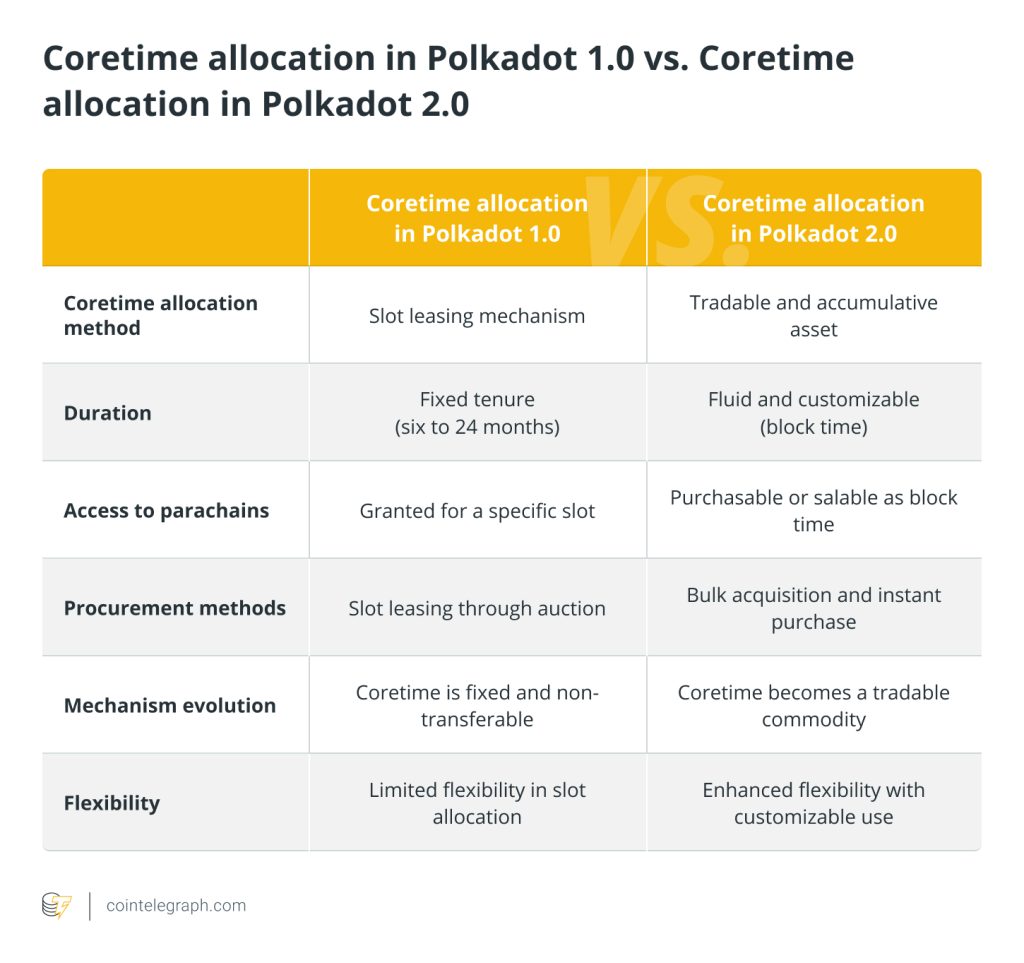
Blockchain networks must solve interoperability and scalability issues to reach their potential.
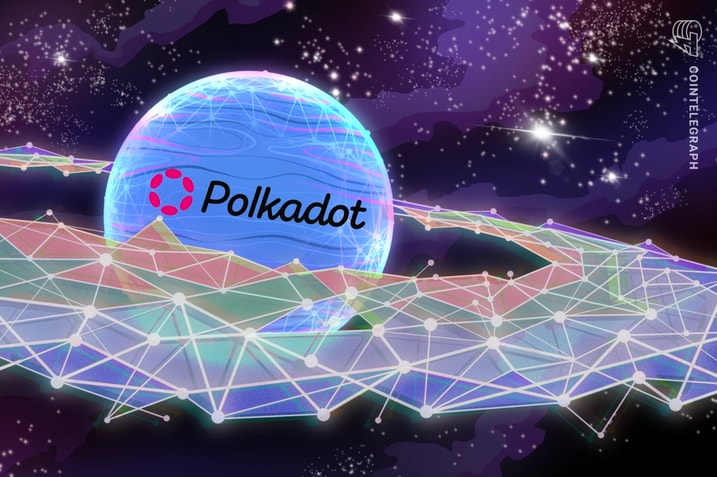

With its dynamic core model and the introduction of elastic scaling, Polkadot 2.0 aims to solve major blockchain challenges like scalability and interoperability.
Predictions suggest that blockchain will reach 100 million daily users by 2028 as finance giants rapidly adapt to decentralized technologies. Blockchain is expected to penetrate 4.3% of the payment industry by 2025, as per a Cointelegraph Research report, suggesting a 95% growth potential.
However, blockchain networks must solve fundamental problems to benefit from their untapped potential. Scalability and interoperability are highlighted as the primary shortcomings in individual blockchain use, and industry experts emphasize the need for blockchains to be interconnected rather than functioning as isolated entities.
Polkadot 2.0 to solve blockchain’s inherent problems
Polkadot, an open-source multichain protocol, enhances cross-chain transfers of data and assets through a network of specialized blockchains. Polkadot’s structure aims to solve key blockchain issues like interoperability, scalability and security by allowing different blockchains to transfer data and assets.
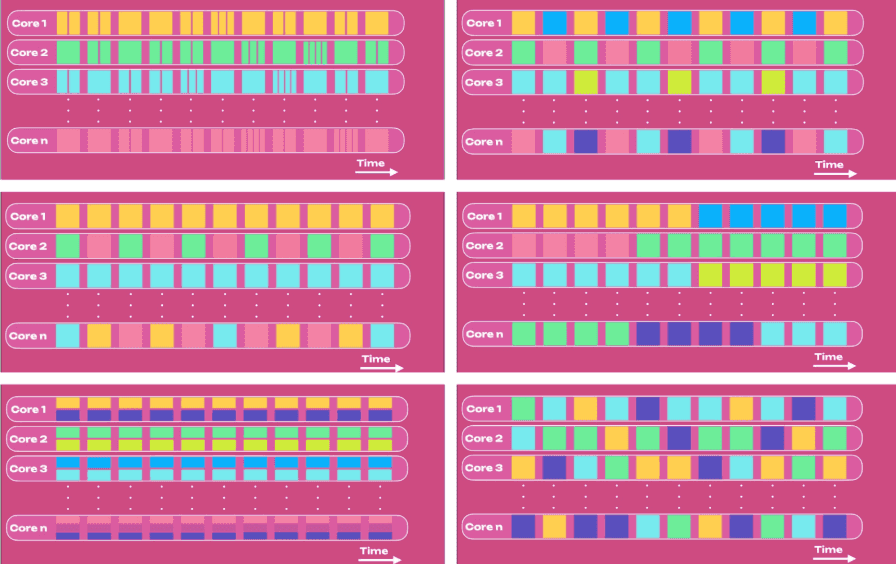
Potential coretime configurations in Polkadot 2.0. Source: Polkadot
Through its parallel chains — parachains — which enable numerous transactions simultaneously, the network introduces a new vision with Polkadot 2.0. The introduction of coretime, designed to adapt computational resources in real-time to meet the network’s needs more efficiently, is at the core of Polkadot 2.0.
Coretime denotes the availability of validator subsets as computational resources, or cores, for processing parachain blocks within the Polkadot network. Presently, Polkadot supports 50 such cores. These cores operate simultaneously, handling numerous complex tasks. Consequently, Polkadot is often dubbed the “Polkadot Supercomputer,” signifying its collective capacity to manage a vast array of tasks concurrently.
Polkadot 2.0 introduces a dynamic core model that significantly enhances the platform’s capabilities. A core is a flexible, cost-efficient blockchain model that allows developers to access the Polkadot network’s security and interoperability on a pay-as-you-go basis without needing a dedicated parachain slot. Smaller projects with intermittent blockchain resource needs can benefit from Polkadot’s robust ecosystem through coretimes without the cost of leasing an entire parachain, which was a requirement in Polkadot 1.0.
Besides cores, Polkadot uses a sharding mechanism that enhances scalability and increases transaction throughput. With the ability to validate up to 20 shards per block and the potential to grow to 100 shards, Polkadot boasts a transaction speed of approximately 1 million transactions per second (TPS) with asynchronous backing, compared to Ethereum 2.0’s throughput of 100,000 TPS.
Coretime marketplace and improved governance
The coretime marketplace in Polkadot 2.0 allows developers to purchase block time dynamically and efficiently scale their operations, matching their computational and consensus needs. The revenue generated from these sales essentially functions as rental income.
With Polkadot 2.0’s scalability, decentralized applications (DApps) can dynamically adjust their resource usage based on demand. DApp developers can seamlessly integrate assets and functionalities across multiple blockchains, expanding the available market and liquidity pools.
Aiming to use a deflationary mechanism, Polkadot presented a proposal to burn the revenue from coretime sales. This decision is expected to make DOT more attractive for long-term retention, consistent with the network’s goals of improving security and efficiency across its ecosystem.
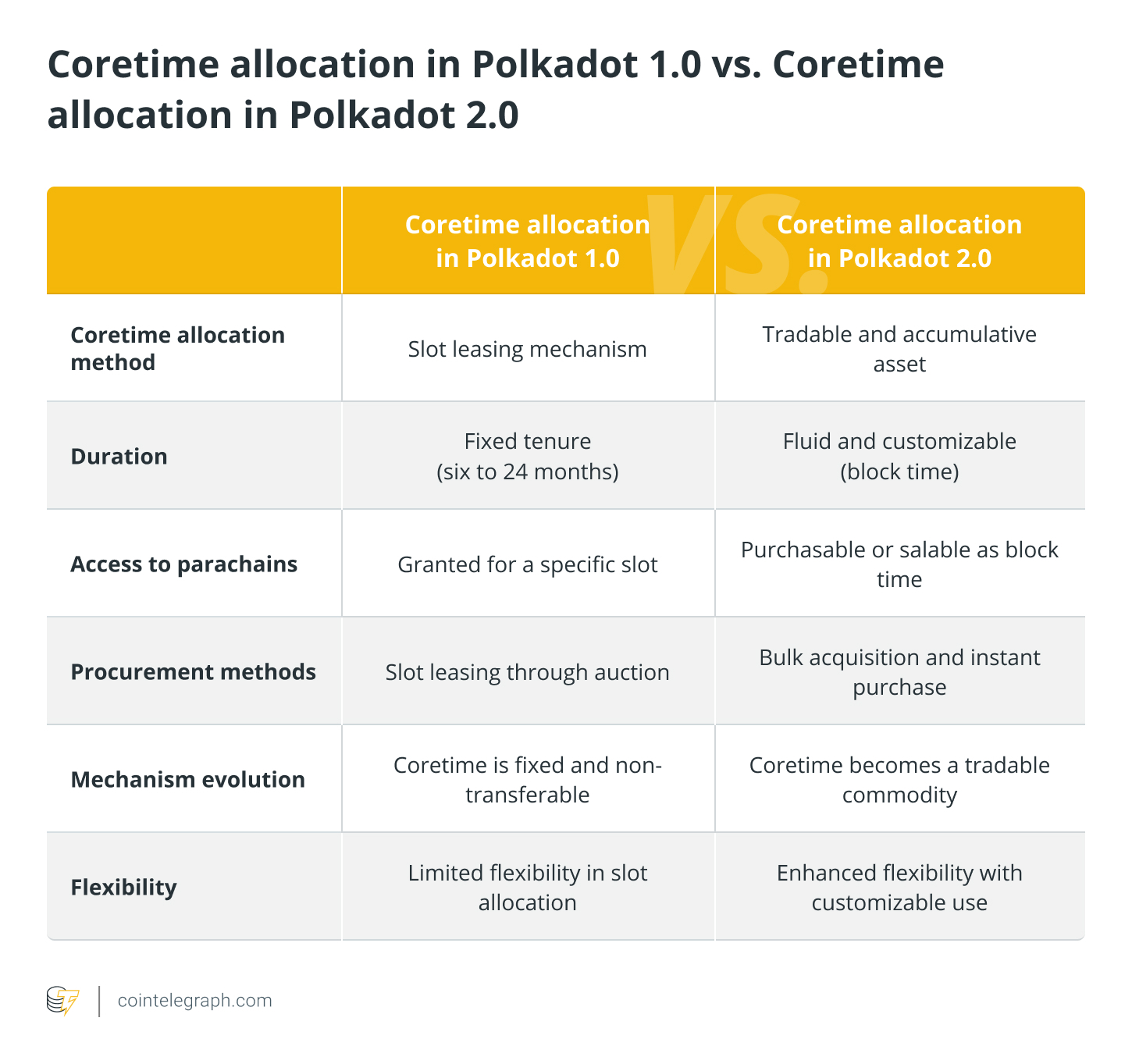
Polkadot 2.0’s OpenGov enhances the platform’s governance structures, making them more democratic and inclusive. The governance model allows Polkadot (DOT) tokenholders to participate directly in decision-making.
Polkadot differentiates itself from other blockchain networks by collaborating with the Securities and Exchange Commission (SEC) and says that its products are considered software, not securities. In this way, Polkadot aims to ensure compliance with securities laws and frame its native token, DOT, as a technology-focused asset rather than a financial instrument.
Challenges and future outlook
Polkadot stands as a pivotal and innovative presence in the blockchain sphere, striving to redefine the interoperability and scalability of diverse networks. With its multichain structure, Polkadot enhances scalability, interoperability and flexibility, which are key to the evolving Web3 framework.
The shift to Polkadot 2.0 signifies the platform’s proactive evolution, addressing many early challenges with more adaptable and efficient solutions. As with any emerging technology, the ongoing evolution and adaptation of the Polkadot network are critical to achieving widespread adoption and maintaining relevance in the swiftly progressing blockchain field.
As Polkadot continues to develop, its success in leveraging its unique capabilities and overcoming its challenges will play a crucial role in defining its position within the broader blockchain ecosystem. Polkadot’s progress reflects the overall growth and maturation of blockchain technology, demonstrating the potential to create a decentralized and interoperable future.

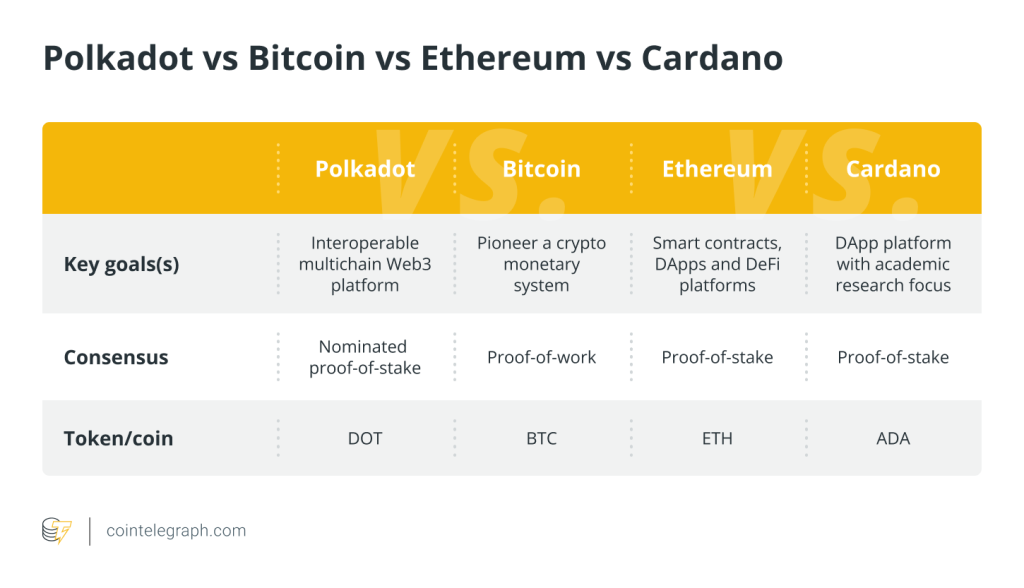

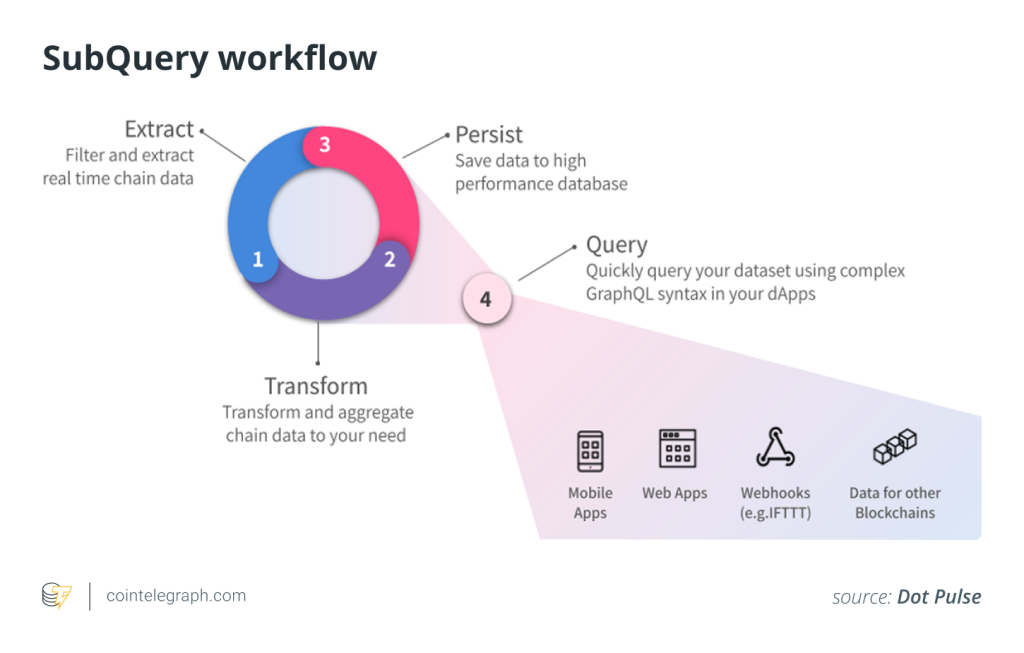
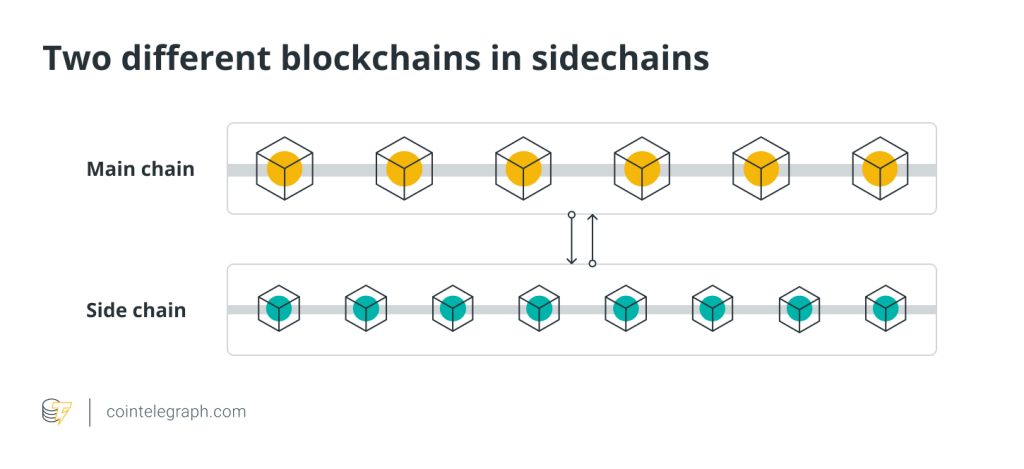

Responses